All about the field chamomile

Field chamomile inflorescences are excellent raw materials for medicinal infusions and cosmetic products. It is quite possible to grow such a culture in garden conditions.
general description
Field chamomile is a perennial herb found throughout Russia. The culture has a strong tap root system and a small stem, the height of which does not exceed 40 centimeters. Buds with a yellow center and white petals are combined into baskets. The number of petals in one flower is 5 pieces, but the number of petals in the combined inflorescence reaches 20-30 copies.
The flowering culture begins in early summer and continues until autumn frosts. An unpretentious plant can live in fields, wastelands and on roadsides, although it still prefers sandy, well-drained areas.
Chamomile is frost-resistant and has the ability to adapt to adverse weather conditions.
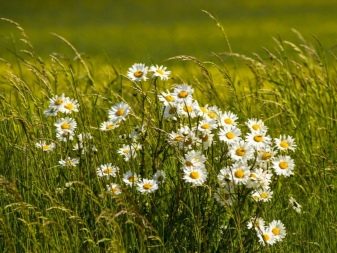
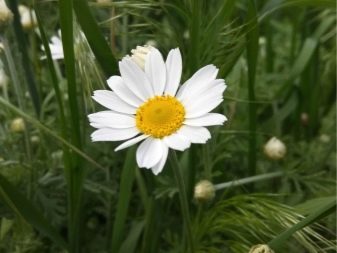
Popular types
In general, it is customary to distinguish more than 20 varieties of chamomile, some of which are field chamomile.
Pharmacy
Pharmacy, it is also yellow medicinal, chamomile grows in height by no more than 50 centimeters. It is characterized by small green leaves that smell as strong as the inflorescences, and outwardly resemble dill. This variety includes the varieties "Zolotistaya", "Caucasian", "Yuzhnaya" and others.
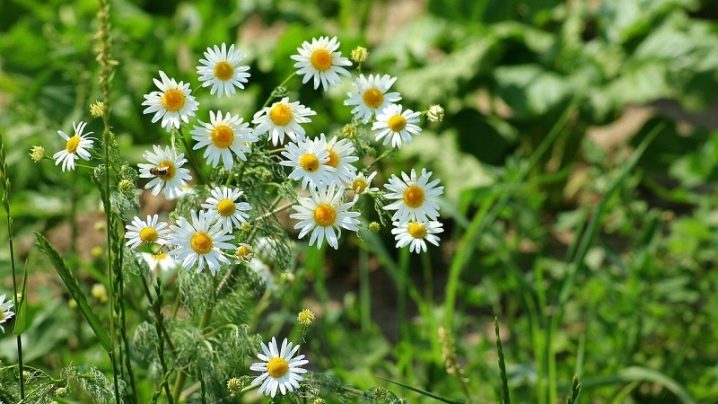
Meadow
Meadow chamomile is often called common daisy. This plant looks quite impressive, and therefore is often used in landscape design: the stem height reaches 1 meter, and the diameter of each flower can be up to 7 centimeters. The middle of the inflorescence is colored yellow and complemented by white double petals.
Daisy bushes grow rapidly, and therefore require frequent planting.
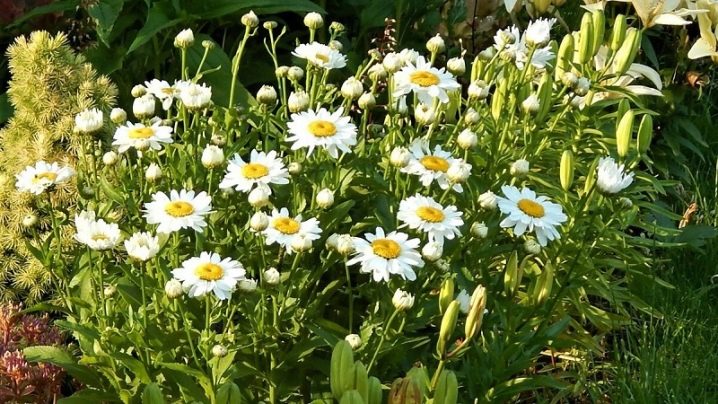
Roman
The height of the Roman chamomile is 15-30 cm. Medium-sized leaf blades are dissected and slightly pubescent near the shoots. The horizontal root system is actively branching. Flowers, 2 to 3 centimeters in diameter, open in early July. The flowering culture continues until the end of summer.
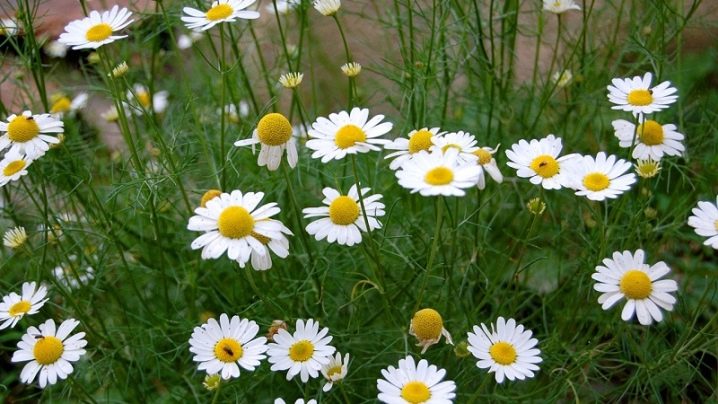
German
A German chamomile bush does not exceed 40 centimeters in height. The erect, branched stem is devoid of leaves in its lower part. This variety blooms from July to August. Its feature is the bisexual flowers.
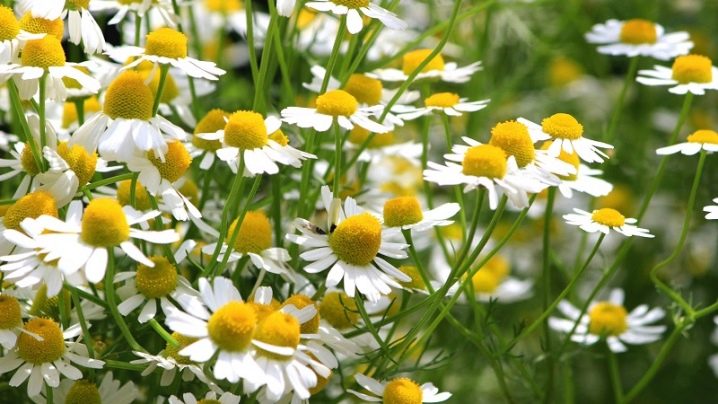
Landing
Chamomile can also be grown in the garden. The plant prefers enriched soils with good drainage and neutral to low acidity. The selected loam is supplemented with peat or chopped straw mixed with sawdust since autumn. The area where the culture will be located should be well lit, since it is the sunlight that guarantees its growth and development. Planting in the shade will lead to the fact that the plant will unnecessarily stretch and curl. For chamomile, neighbors such as geraniums, phloxes and lilies are suitable, but it will not get along with roses because of similar pests.
Sowing of field chamomile is proposed to be carried out twice a season. This happens either in September or at the beginning of spring, and it is the second method that allows you to quickly procure medicinal raw materials.Despite the fact that it is customary to plant the material in early spring, you still have to wait for the month when the probability of frost return becomes zero, which in most cases occurs from April to May. Most gardeners practice pre-hardening the seed. For this, the grains are removed to the refrigerator for about a week.
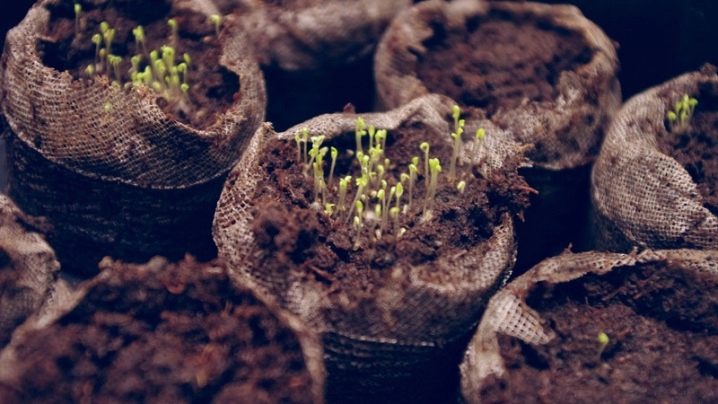
Glubina, on which the seeds are planted, does not exceed 1-3 centimeters. Sowing of culture is carried out both in rows and in a nesting way. It is important to maintain a sufficient row spacing in order to further trouble-free care of the crop. After sowing, it is recommended to cover the area with polyethylene, which will accelerate the emergence of seedlings up to a couple of weeks.
Seedlings of field chamomile, prepared at home, are sent to the open ground a month after sowing the seeds., that is, in May, when the night temperature is set above +15 degrees. This method is proposed for regions with unstable weather conditions. Seedlings are grown on a well-lit windowsill and transferred to their permanent habitat when 2-3 full leaves appear.
It is best to use the nesting method of planting, deepening the bushes so that all the roots disappear underground. After the whole chamomile is located in the garden, it will need to be irrigated with warm water.
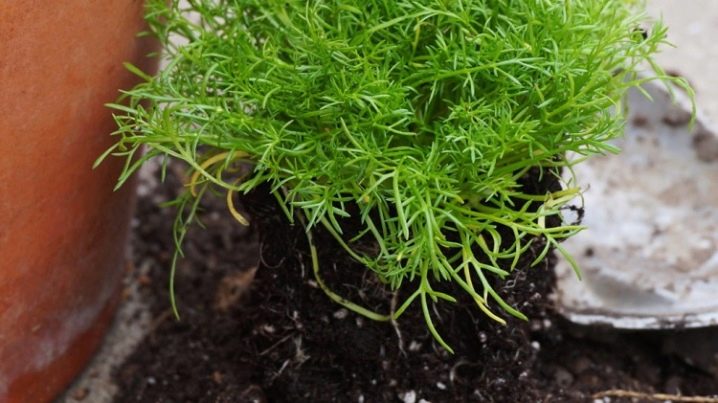
Care
Chamomile grown in the garden does not require particularly complex care.
Watering
Chamomiles grow well, and most importantly, they successfully carry out the flowering period only in the case of regular watering. The frequency of the procedure becomes especially important on dry days, as well as if the culture is grown on sandy loam soil. At the same time, in no case should water stagnate in the garden bed, otherwise beautiful flowers will simply die from rotting roots. Therefore, if the site is characterized by a close occurrence of groundwater, artificial drainage must be organized.
Mention should be made of the importance of getting rid of weeds, gently loosening the soil and mulching the trunk circle. Before severe frosts, the crop is protected by straw, peat or sawdust, which forms a 20-centimeter layer.
And also at the end of the growing season, it is necessary to cut off the entire aerial part of the chamomile, that is, the stems with leaves.
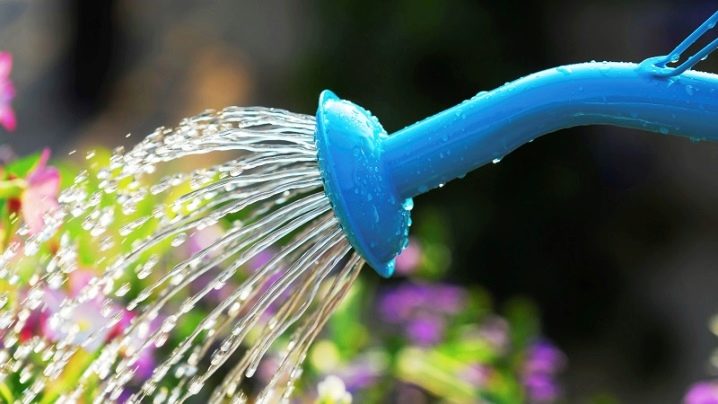
Top dressing
Before a culture blooms, it necessarily needs top dressing, for example, nitrophoska diluted with water, or any ready-made composition. The next time, fertilizers are applied after the flowering is completed. At this stage, potassium and superphosphate are more suitable for chamomile. Typically, for processing several bushes, you have to prepare about 8 liters of nutrient mixture. To prevent the activity of pathogenic flora, wood ash is also embedded in the soil at the end of flowering.
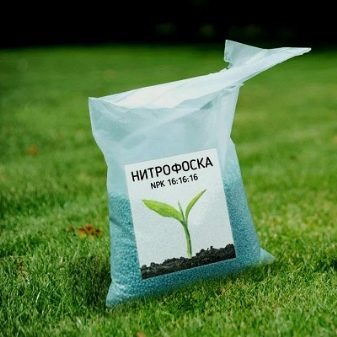
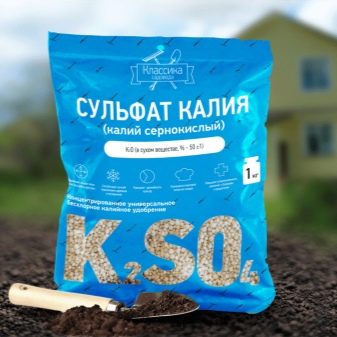
Reproduction
Chamomile reproduces in several ways. Most often, seeds or seedlings are used, but you can also use cuttings with rhizomes. Seed material is collected only from healthy, actively flowering bushes. When the plants bloom, their peduncles reach maturity, and dry petals begin to fall off, small baskets with grains, which turn brown, are cut and dried in a warm, ventilated room. Next, the seeds have to be removed, cleaned of debris and sorted. They will be stored in a perforated paper bag until the next sowing.
If a bush of beautiful and useful flowers has grown a lot, then it can be divided into several plants. This is done in the fall: chamomile is completely removed from the ground, and its root system is evenly divided. The resulting specimens are immediately planted in a new habitat and fed with fertilizers.It is recommended to arrange the division of the bush even if the chamomile has reached 5-6 years, which means that the size of its inflorescences has decreased, and the likelihood of infection with fungal diseases has increased. Reproduction of a culture using cuttings is a difficult matter, and therefore it is rarely chosen. It is customary to use this method in cases where the root system of the plant is damaged, and it is impossible to collect seeds.
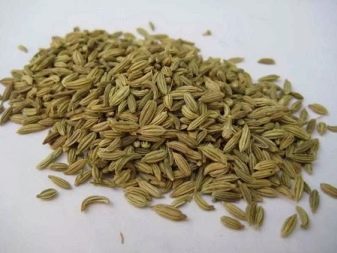
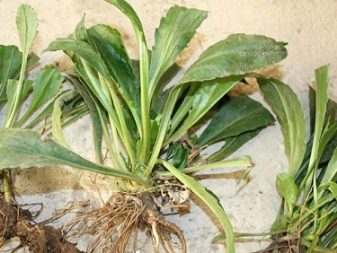
Collection and storage
It is best to collect chamomile during flowering, since the maximum concentration of nutrients is observed during this period. Since the culture blooms from May to October, during this entire period, the procedure can be carried out three times. It is important to remember that a plant that has completed flowering loses its medicinal and cosmetological properties, and therefore there is no point in collecting it altogether. Field chamomile can be cut almost anywhere, except in contaminated areas: near roads or near factories. It is better to start work on the fifth day after opening the buds. Determine that the required time has come, perhaps by the appearance of the inflorescences: their petals look horizontally, but the core is not yet fully open. Field chamomile is harvested on a dry and warm day, ideally in the early morning. The inflorescences are carefully torn off the stems by hand or cut with a special tool. In no case should you pull out the bushes completely together with the root system.
Chamomile flowers are equally important to dry properly. If in the future only flowers without stems will be used, then they are evenly laid out on a clean horizontal surface, for example, on top of kitchen cabinets covered with newspapers, or on a special flooring. The layer thickness should not exceed 2-4 centimeters. A window sill is not very suitable for this purpose, since it is impossible to protect medicinal preparations on it from exposure to direct sunlight.
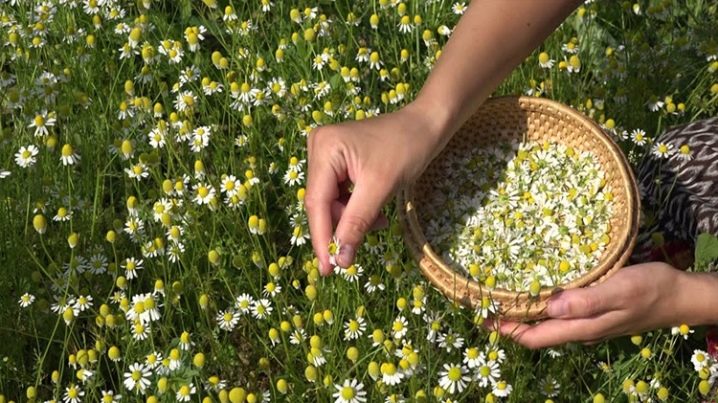
Drying chamomile requires partial shade as well as good air circulation. Plants, cut along with the stems, are collected in bunches, after which they are tied up and stored. Place them in a dark, well-ventilated area.
The readiness of field chamomile for further storage is determined by its appearance: the product should become dry and rustling. While on drying, the inflorescences must be turned over daily - this will improve air circulation, which means it will speed up the drying of raw materials. In general, the procedure takes about 14 days. During drying, a kilogram of fresh material is transformed into about 250 grams of dry material. It should also be mentioned that it is not recommended to dry field chamomile in electric dryers or ovens, since such heat treatment leads to the destruction of most of the nutrients. At the final stage, dried plants are harvested for long-term storage, the period of which is about 2 years. The inflorescences are proposed to be laid out in clean cardboard boxes, which are then removed to a cool, darkened room.
It is also possible with glass jars or bags made of natural undyed fabrics.
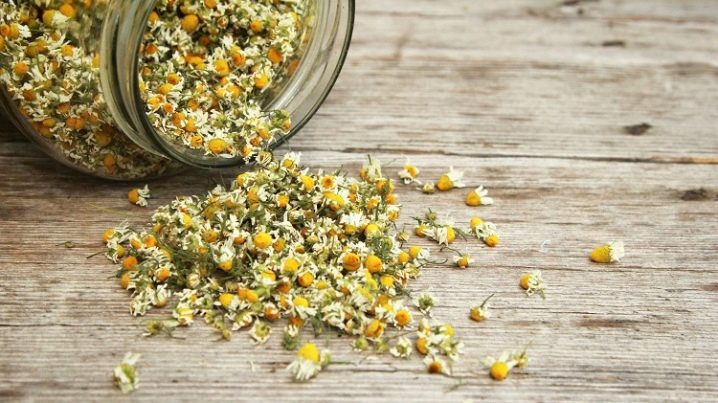







































































































The comment was sent successfully.